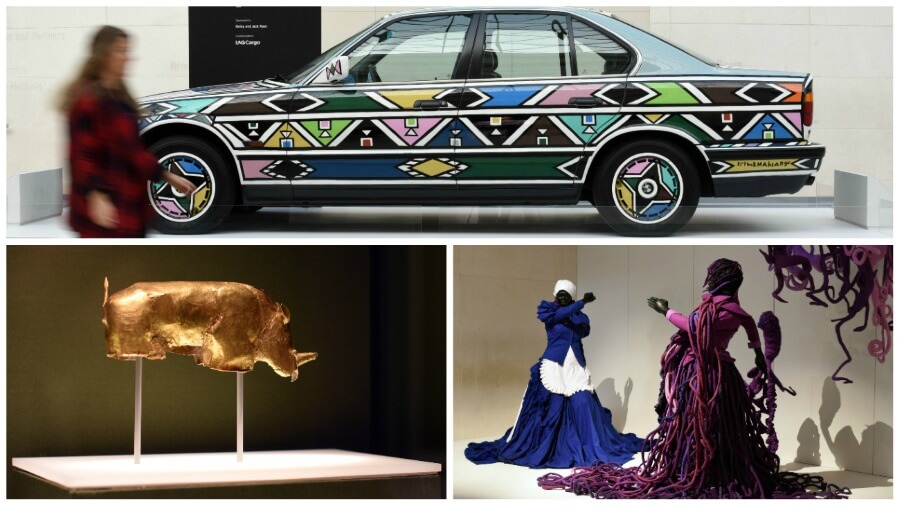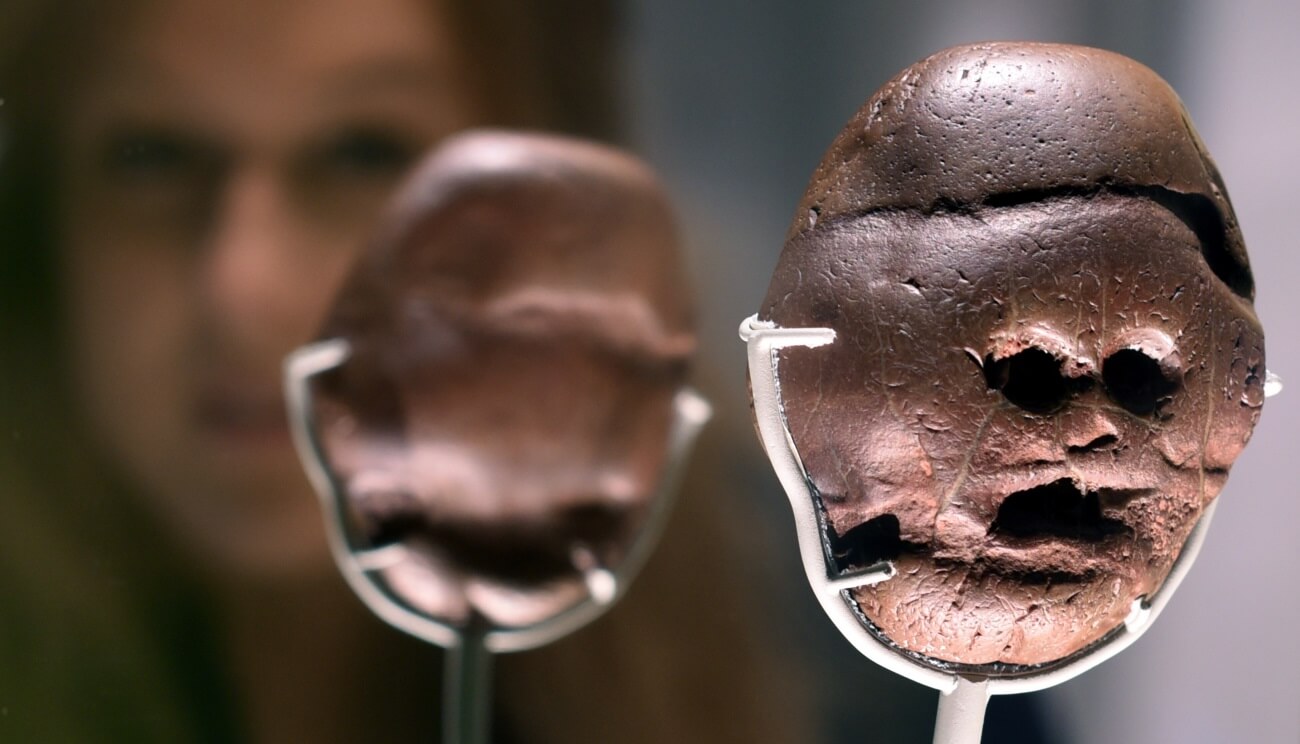It is the Makapansgat pebble, on display for the first time in its three-million-year history, curators reckon – an object that, in its own way, outshines the other treasures in the museum’s halls.
Experts theorise a very early ancestor of humans, Australopithecus africanus, picked up the pebble and took it home, mainly because it was interested in a pattern of lines on the surface that, even today, look startlingly like a face.
“This is an example of early curiosity, a pre-cursor to true art that some people have called the earliest piece of art of anywhere in the world, the earliest piece of found art,” said John Giblin, co-curator of the show “South Africa: the Art of a Nation”.

South Africa the Art of a Nation
The naturally-formed pebble – also known as the stone of many faces – was found in Makapan valley in Limpopo province near some Australopithecus remains in the 1920s, several kilometres away from its likely source.
The theories have clustered around it since. It could be the earliest known sign of empathy – if the creature saw it as a baby. It could show the development of self-awareness – the stone forms a different face if you turn it the other way round, a face very much like an Australopithecus africanus.
It also has a claim to being the world’s earliest known exhibit – in the sense of an object set aside for special contemplation – giving it an edge over the Elgin marbles one floor down in the British Museum, or the Egyptian mummies two floors up.
That is all theorising. “It’s impossible to ever really know what’s behind the pebble and if these early australopiths recognised it as a representation of something that looked like them,” said Bernhard Zipfel from the Evolutionary Studies Institute at Witwatersrand University in Johannesburg, which loaned the pebble.
But it is theorising that has continued to compel experts in the field.
“When you are holding it and looking at that face and imagining how another being three million years ago saw a face in that – and you remember how you walked along a beach and picked up stones that looked like they had faces or other features in there – you see this really common experience,” said Giblin.
[Header image]– In a corner of the British Museum’s new South African exhibition, near an ancient golden rhino and a collection of apartheid-era campaign badges, sits a glass case holding a pitted, reddish-brown stone.
(Reporting by Andrew Heavens; Editing by Toby Chopra)
LONDON / Thomson Reuters Foundation – the charitable arm of Thomson Reuters, which covers humanitarian news, women’s rights, trafficking, corruption and climate change. Visit news.trust.org

